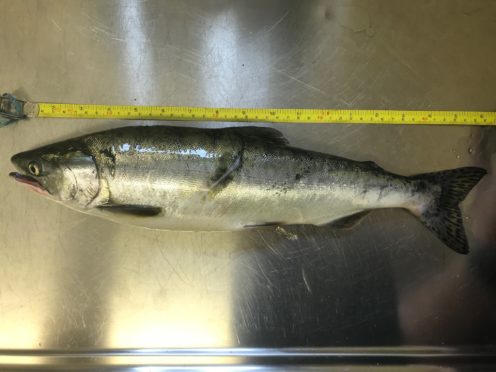Anglers in the north-east have been warned to keep a close eye out for strange fish on the end of their lines, after an invasive species was reeled in on the River Dee.
The River Dee Trust has recorded the first pink salmon catch of the year, which was landed by someone fishing for Atlantic salmon in the lower stretch of the river.
The species is native to the Pacific Ocean, but it is believed to have spread across to waters in northern Europe, after it was released into Russian rivers around 50 years ago.
In 2017, a large number of pink salmon were recorded in UK rivers – however, due to the two-year life cycle of the species, conservationists have anticipated a resurgence of reports this year.
Although the risk of the species establishing itself in Scottish rivers is believed to be relatively low by Fisheries Management Scotland, there is a risk that a surge in pink salmon numbers could increase competition with native fish for food.
The River Dee Trust has asked anglers all along the 87-mile long River Dee, which stretches from the Cairngorms all the way to Aberdeen harbour, to keep any pink salmon they catch and report it to the trust’s office on 01339 880 411.
It is illegal under the Wildlife and Countryside Act 1981 to intentionally target the species, and failing to report any catches can lead to further action.
In a statement, the trust explained the tell-tale signs that differentiate pink salmon from their native cousins.
The trust said: “The first pink salmon of 2019 has been caught on the lower Dee, whilst fishing for Atlantic salmon.
“The two to three pound was easily distinguished by its spotted tail, and black tongue and gums.
“In 2017, pink salmon were caught in the lower Dee in July and August.
“Their two-year life cycle suggested we would see none in 2018, but would again in 2019.”
The organisation added: “We are advised to try and remove any pinks prior to spawning and will be looking to do so under licence from Scottish Natural Heritage, should there be enough numbers to merit this approach.
“Based on spawning activity in 2017, we expect to carry out this work from late July into early August.”
